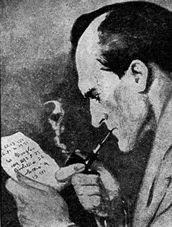
I just finished a novel that I was previewing as a possible text to teach next year. It is called,
Water for Elephants. It is a New York Times best seller and was highly recommended by a number of avid readers. In the past, I have taught
The Kite Runner by Khaled Hosseini and
Old School by Tobias Wolff. I make a point to include 21st century novels on my reading list for Senior English, but alas, I am often disappointed with the trite, anachronistic, and unauthentic content of post-modern literature. Protagonists are spineless at the beginning, and they remain spineless at the end. They resolve the crisis of their "spinelessness" by simply embracing it. They lack moral fortitude when it comes to the “conventional” morality, but they are stalwart defenders of political correctness.
Water for Elephants was no different. The captions on the cover say things like, “I couldn’t put it down for one minute.” I must admit, there were times I couldn’t pick it up… even for a minute. The novel is set during the Great Depression. It begins with a slighty contrived crisis in the life of a young man about to graduate from Veterinary program at Cornell. His parents are suddenly killed in a freak car accident and he is left penniless because the bank---unflinchingly---foreclosed on his entire inheritance. So, he runs off with the circus… (I know… THE CIRCUS…?). In truth, that is the most interesting part. The author researched extensively the American travelling circus in the twenties and thirties. The circus is a fresh and interesting setting, full of possibilities for examining the strange and bizarre behaviour of human beings---both those who go to the circus, and also those who run a circus. Unfortunately, the author fails to develop, with any authenticity, a single believable human being in the story.
The protagonist, Jacob, was a man ahead of his time... Way ahead. In fact, it seemed as though he just entered a Vancouver Star Buck’s and was inadvertently sucked into a trans-temporal worm hole, thrusting him into the previous century. I may have bought into the tribute to post-modern relativism and egalitarianism if I could have seen some growth in the character caused by relevant experiences. The novel begins like a Bildungsroman, but the protagonist never really comes-of-age. His character is static---other than loosing his virginity; he doesn’t really learn anything or change. Even when the novel alternatively flips from the 1920s circus to a 21st century nursing home, we see no real growth in the elderly Jacob compared to the youthful Jacob. And, as a result, the reader experiences no growth either; we are simply served up another helping of the bland post-modern, 21st century tofu and rice cakes we get from media like un-real "reality" TV.
Political correctness seems to be the backbone of the novel. The most glaring anachronism is the fact that the protagonist is innately unprejudiced toward people groups who have been historically discriminated against: women, prostitutes, Jews, short people, stout people, labourers/working class, and so on. No classicism and no prejudice. I am not upset with the values he holds; however, as a reader, I am disappointed with the unjustified presence of late 20th century values. His resolution to adhere to political correctness (while still damning the sinister bourgeois) comes without any catalyst. In contrast, Mark Twain’s novel,
The Adventures of Huckleberry Finn, demonstrates the reality of how values are formed; Huck undergoes conflicts between experiences, his conscience and external pressures. Through a series of incidents and personal struggles, Huck eventually overcomes the social and societal prejudices instilled in him and he realises that Jim is truly human being… truly the best of men. In Gruen’s novel, however, the protagonist starts the novel fully acclimatised to modern values. He is an egalitarian who has more in common with the likeminded working class than he has with upper management of the circus. The irony is, of course, he comes from an upper middle class family (his father is a veterinarian) and he attended a veterinary program at Cornell. While rubbing shoulders with the elite at Cornell, in a professional program, with peers who are rich enough to be studying at a prestigious school during a depression… it is unlikely he would be sympathetic to the poor, working class. Yet, lo and behold, when he finally meets poor, working class people, it turns out they are all decent people. Even the “rough” security personnel do their job reluctantly. I also get the impression that Jacob is a feminist (who although tempted to objectify women, resolves—inexplicably in the novel—to treat women with equality and respect); in addition, he is an animal activist, engineer of social welfare and a moral relativist. Very modern indeed. I am surprised Jacob isn’t also a vegetarian who decries the amount of garbage the circus creates. That would be going too far, perhaps. In the ending of the novel, Jacob takes on a very 21st century demeanour when he refuses to grow up (even though he is now 93 years old) and he opts [
spoiler] ...to run away with the circus... again.
What I did like about the novel is the vocabulary. Gruen has clearly researched the vernacular of the circus and she uses vivid precision in her diction. At times, though, it seemed she was using a thesaurus too often, when simpler words would do, in an effort to present a high-brow façade to divert the reader’s attention from the contrived storyline: an orphaned veterinarian running off with the circus, falling in love with a show girl who is already married to a mean and nasty man, and ending up adopting a pet elephant, marrying the girl and working at a zoo. I am very surprised the publishers accepted this pitch. A vet, the circus, an elephant and a happy ending… perhaps they were confusing the pitch with a James Harriot novel.
After finishing the novel, I turned back to Homer’s
The Iliad to finally draw to a close my reading of this epic poem. It was like going from a lunch of instant microwavable mac ‘n cheese and no-name pizza pops to an evening dinner of steak, baked potatoes, sautéed mushrooms and red wine. Why can’t we write stories like Homer anymore?



















